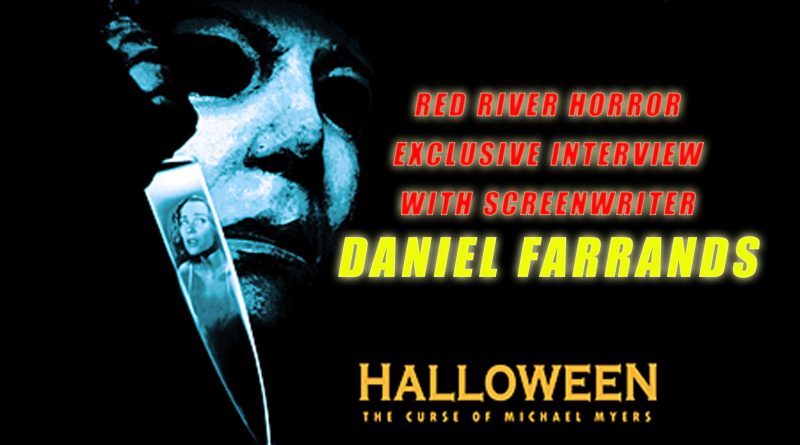Halloween 6 | 25 Years Later
By Staci Layne Wilson
Halloween: The Curse of Michael Myers came out in 1995 and stands a quarter of a century later as one of the most unique entries in the ever-popular slasher franchise. For one thing, it stars the inimitable actor Donald Pleasence as Dr. Loomis in what would be his final role, while ushering in Paul Rudd as Tommy Doyle, making his cinematic debut. It’s the sixth installment in series, and while it does follow the fearsome formula of Michael Myers stalking the Strode family, there are major twists and turns as we learn the source of Michael Myers’ immortality and his drive to kill.
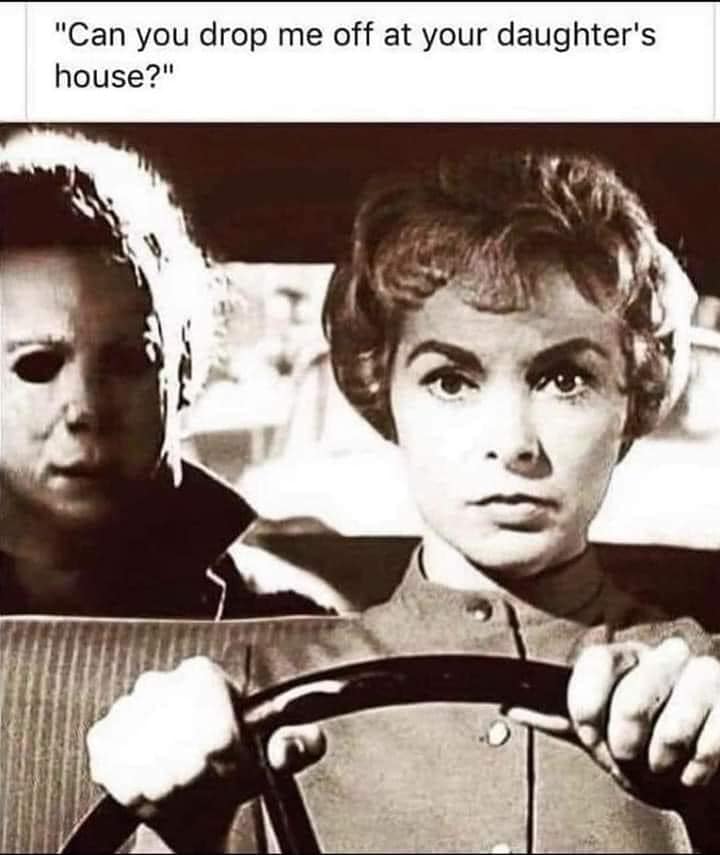
There are two versions of the film – the theatrical, and the significantly different, fuller, Producer’s Cut. But no matter how you slice it, Halloween: The Curse of Michael Myers remains one wild ride. Daniel Farrands, the screenwriter, was a lifelong horror movie fan, but not the seasoned filmmaker he is today. So, it was a major feather in his cap to get the job.
Farrands took the time to tell us all about it:
Red River Horror: Your first feature credit is “Rave, Dancing to a Different Beat.” Tell us a little bit about that, and whether it helped you get “Halloween: The Curse of Michael Myers.” (aka, “Halloween 6.”)
Daniel Farrands: I was an assistant working at the Motion Picture Association of America in my early 20s. Yes, the dreaded MPAA known as “Hollywood’s Censor Board” which was somewhat ironic in that I dreamed of making horror films for a living. Whenever a new horror film would be screened, I’d get a call from the projectionist saying, “Hey Dan, we’re about to screen Friday the 13th Part 8” or whatever, and I’d get to watch all of these horror/slasher films with the “censor board” as they were taking notes and determining which scenes needed to be cut down in order to qualify for an R rating. So I got to see many of the “uncut” versions of these movies that fans now consider holy grail material.
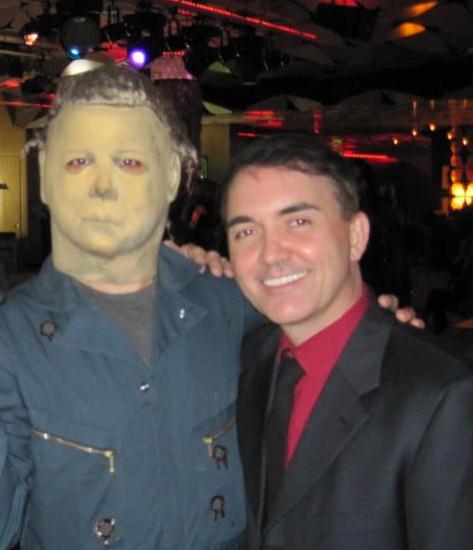
In any event, one of the bosses at the MPAA introduced me to a producer friend of hers by the name of Luigi Cingolani. Luigi had produced several low-budget indie movies like “Cameron’s Closet” and “Spaced Invaders” and was looking for a writer for a new project. I was thrilled to meet with him and to essentially be hired on the spot. He wanted a script written in three weeks to be set in LA’s then-burgeoning underground club scene. I am not sure the word “rave” even existed yet, but ultimately that’s what they titled the film. It was about a dance troupe making their way through the underground clubs and getting involved with a cartel passing around tainted “X.” I knew nothing about raves (or certainly “X”) – and no, I didn’t do that kind of research! – so I just kind of winged it. The next thing I knew, we were making a movie in these abandoned warehouses in downtown LA. I don’t think it ever got distribution in the US, but it was a produced credit – and it enabled me to work part-time instead of full-time at the MPAA, so I could focus more on writing. I was incredibly grateful. Plus, I got to learn about Ecstasy and Day-Glo club apparel!
Interestingly, one of the stars of “Rave” was a young Gina Phillips, who went on to star in “Jeepers Creepers.” When I eventually got the call to come in and pitch for “Halloween 6” and floated the idea of bringing back the Jamie Lloyd character, the producers didn’t think Danielle Harris would be interested (which made no sense to me, but again, I was just thrilled to be there!). I suggested Gina for the role since they actually look like they could be sisters. Gina passed since she and Danielle were friends and she didn’t want to take a role that she (Danielle) had originated. Later we found out that not only did Danielle want to return to play the role, but she wondered why it wasn’t offered to her. The rest, sadly, is history, as they say, but I understood her reasons for passing on the project. The studio treated her as if she had no value to the franchise which was incredibly hurtful and insulting to Danielle. Thankfully we became friends after that debacle and have worked together on a couple of projects.
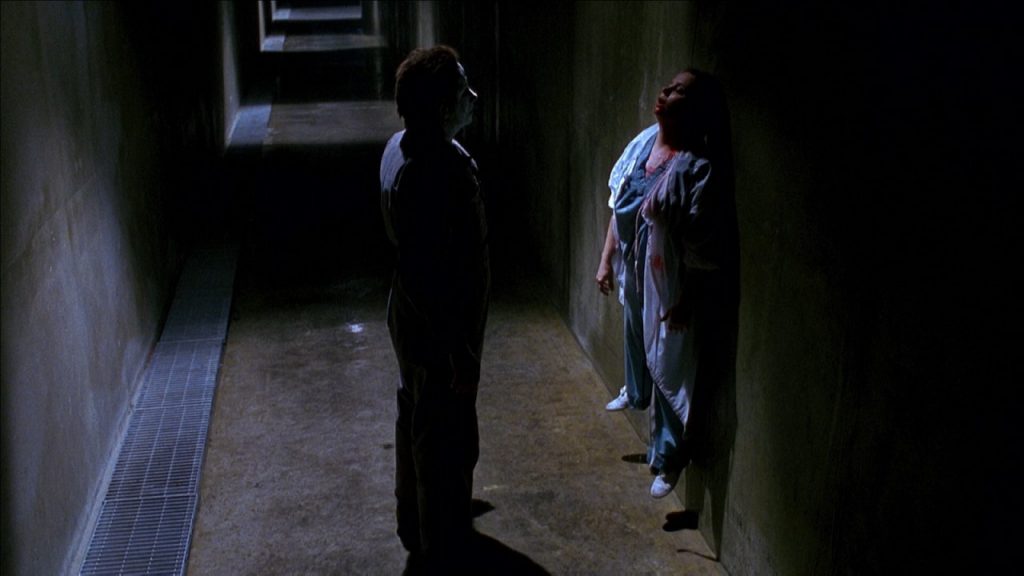
RRH: How did you go about shopping your “Halloween” script to the studio? Or did they come to you?
DF: I definitely did not “shop” any “Halloween” scripts to the studio. The rights to “Halloween” were owned by the late Moustapha Akkad. He financed the original film and then bought out the sequel rights after “Halloween III” and went on to produce and distribute “4” and “5” through his own company, Galaxy International. I was literally just this rabid fan of the franchise who declared to my closest friends after seeing “Halloween 5” that I was going to write the next sequel!
I was all of 19 or 20 at the time. I did not know Moustapha. I did not know anyone involved in the franchise. I just knew this is what I had to do.

I picked up this guide at a newsstand that they used to publish every six months or so called the Hollywood Creative Directory. All of the L.A.-based production companies were listed in it (this was very much pre-Internet!), and I found Moustapha’s company listed in it. I wrote what basically amounted to a fan letter explaining my knowledge of and passion for the series, and that I had a horror script I would like to submit to him.
To my surprise, I received a call maybe a week later from Ramsey Thomas, who was one of the producers of “Halloween 5.” He said they were looking for a writer for “6” which he said they planned to get started on right away. He told me to send him a writing sample of mine, which I promptly did.
Maybe a week or two later, Ramsey phoned me to say he had read my script, thought it was great, and that he wanted me to come in and meet Moustapha. I was literally like, “This can’t be happening. It can’t be this easy!”
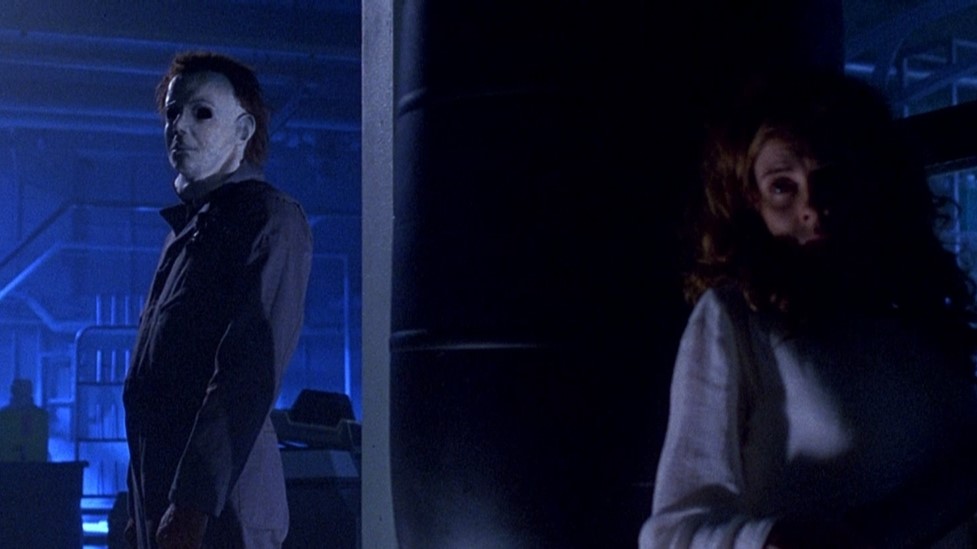
I spent the next couple of weeks busily putting together a pitch (mind you, I had never done a real “pitch” meeting before!). I also went to the Bodhi Tree bookstore and was determined to figure out what that strange triangular symbol was on the “Man in Black” character who made his way around “Halloween 5” like the gunslinging ghost of Lee Marvin. I found the answer in a book called “Rune Magic” by Donald Tyson. “Thorn” was said to be a demon that, when applied to a person, would literally visit them with the devil. This gave me a starting point from which to build a story.
I compiled this giant binder filled with all of my research, and with various ideas and story threads that could be explored in “Halloween 6” and beyond. I even created a “Myers Family Tree” chart showing the entire family bloodline! It was quite an undertaking but when you are young and hungry, with zero connections and sort of flying by the seat of your pants, you kind of pull out all the stops. The cherry on the cake (or the stem on the pumpkin as it were) was a cover page that I designed with “Halloween 6” emblazoned in orange letters … only this time I replaced the “A” with the “Thorn” symbol. Little did I know I was even doing their marketing for them … and I didn’t care. I just wanted to get their attention.
RRH: Did your script go through Development Hell, or/and were there a lot of changes?
DF: “Halloween 6” was given the subtitle “The Curse of Michael Myers” partially because of the wild changes that were made to the script and to the film. It has kind of developed its own “cult status” (pardon the pun) among fans for being the most tampered-with entry in the franchise. I don’t know if that’s entirely true, but it sure was an odyssey to see how the script was dismantled and put together in a form that I didn’t entirely recognize. I have a much different attitude about it now than I did 25 years ago. Time heals all wounds, as they say. I initially wrote a draft that was much bigger than the budget would allow. Moustapha Akkad, who I certainly credit with kick-starting my career in the film industry, was really supportive of my vision for “Halloween 6” and said he thought I came up with enough material for two films. Unfortunately, as things often happen, the studio and director had a different vision for the project. I tried to write it as a true fan’s homage to what had come before, and attempted to bridge the disjointed continuity between Halloween 1&2 and 4&5. I wanted to basically bring all those disparate elements into one movie and hopefully expand a bit on the mythology of Michael Myers. Who was this unstoppable force of nature who on one hand seemed very human, but on another hand seemed to be driven by a force that had to be supernatural? Those were the questions that fueled my telling of the story.
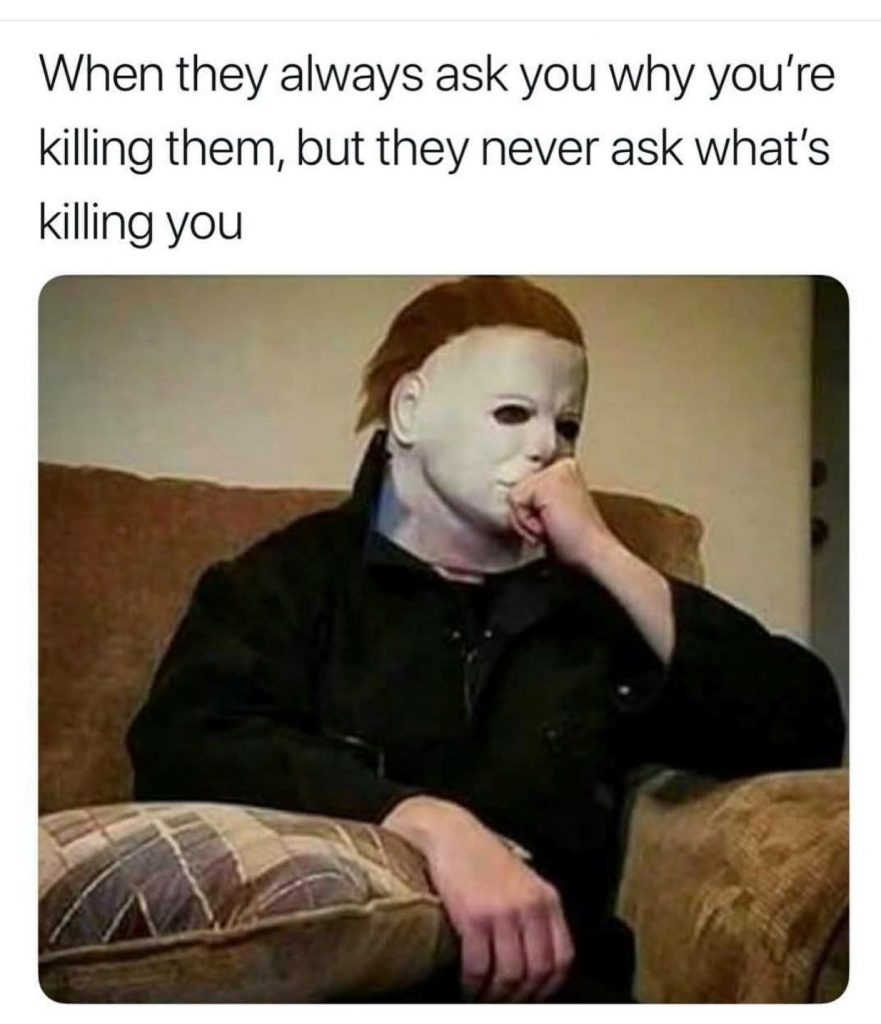
I did many rewrites both on set and after the movie had wrapped when the producers realized that the movie didn’t work. My feeling was that it needed more suspense and thrills, not a higher (and bloodier) body count. Being the rookie (and “just the writer”), my vote was quickly dismissed by the studio in favor of more bloodletting. Moustapha, to his credit, was not on board with the changes and he and his son Malek were sidelined from the process while the studio (Dimension) took over. Just weeks before the film was scheduled to be theatrically released, the studio-ordered reshoots began. I was consulted and brought in for a week to write a new ending. What I didn’t know was they had simultaneously hired another writer to bring in a “fresh take.” What I read in those pages was really off the rails. The script had our quiet, college-girl heroine suddenly wielding a machine gun like Linda Hamilton in “Terminator 2.” There were thunderous “voices of God” causing walls to shake and hospital corridors collapsing. There was a lab of fetuses where apparently a group of doctors were experimenting with DNA and trying to harness some kind of “scientifically-engineered evil.” It was all so completely bonkers I really didn’t know what to say.
Ultimately, things like the booming voice of the “Thorn God” and our machine gun-toting heroine were dropped – but those weird doctors and fetuses remained. I literally had no idea what movie they were making at that point but was reassured many times, “It will all make sense when you see it on screen.” Twenty-five years later, I am still scratching my head over that one!
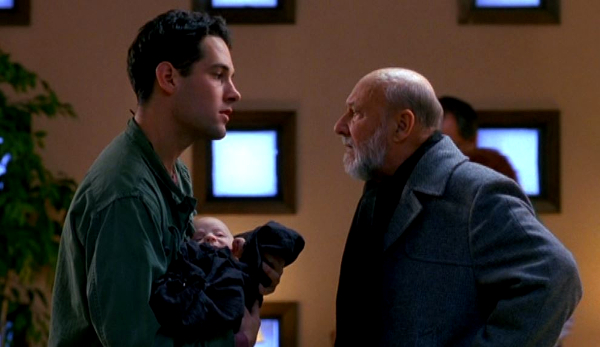
RRH: When did you first become aware of “Halloween,” and what is it that you love about that franchise in particular?
DF: I was a little kid when the original film came out in 1978, but everyone knew about it. I remember my babysitter (how apropos!) explaining the movie to me and the twist ending … “Then the doctor looks down, and the killer is gone!” It was like hearing an urban legend for the first time. I didn’t actually see the film until it first aired on network television a week before “Halloween II” was released in October of 1981. I was the “last man standing” – or sitting – as one by one, my family trotted off to bed because the movie was getting too scary. So there I sat, huddled in the dark, a fortress of pillows around me, wielding a remote control as I recorded (on primitive VHS!) this movie that I “shouldn’t be watching.” I remember my heart racing and being completely swept up in the final act of the movie. When it was over, I was still terrified but exhilarated – it was almost that feeling you get after riding a really intense roller coaster.
From that moment, my love of horror was forever ignited. I didn’t ask – I insisted – on seeing “Halloween II” the next weekend. And after that, all bets were off. I basically became the kid at school who made horror movies on weekends. I recruited every kid in my class to either star in or help me shoot these little “Halloween” homages such as “Halloween Party,” “Halloween: Hospital of Terror” or whatever I could conjure up on my electric typewriter.
I had always been writing since I was very small. I think I taught myself how to type when I was 7 or 8. Not such a big deal now, but you didn’t see kids in the 70’s sitting down at a typewriter banging out stories and movie scripts!

I think what appealed to me so much about “Halloween” was what has made it such a classic 40-plus years on. Our collective fear of the dark, of the unknown, of a faceless boogeyman that we can’t stop or reason with. All of the tropes that are now considered clichés in horror were sort of given birth with “Halloween.” It was for a long time the most successful independent movie in history. And as the sequels and remakes and reboots have confirmed, you can’t kill the boogeyman!
RRH: What was it like, meeting John Carpenter, Jamie Lee Curtis, and Donald Pleasence from the original for the first time? What was the occasion?
DF: By the mid-90s, John and Jamie and of course the incredible Debra Hill had gone on to other projects and big careers. “Halloween” was not in their wheelhouse anymore, as it were. Moustapha and his son Malek really were the keepers of the franchise during those years. We luckily had Donald with us for “6” and he lent that sense of legacy and legend to the experience for all of us. It was truly one of my life’s great honors to write the role of Loomis for him for the last time. We were all really young – I was 24 when I got the job. Paul Rudd, who has gone on to superstardom, was my age. We were kids running around Salt Lake City making this movie and I think I speak for the whole cast when I say it was an unforgettable moment in time for everyone involved. I felt like the luckiest guy in the world – truly – and I still do. Without that movie, I don’t know if I ever would have “broken in,” much less had a career that has lasted more than 25 years. I am incredibly grateful.
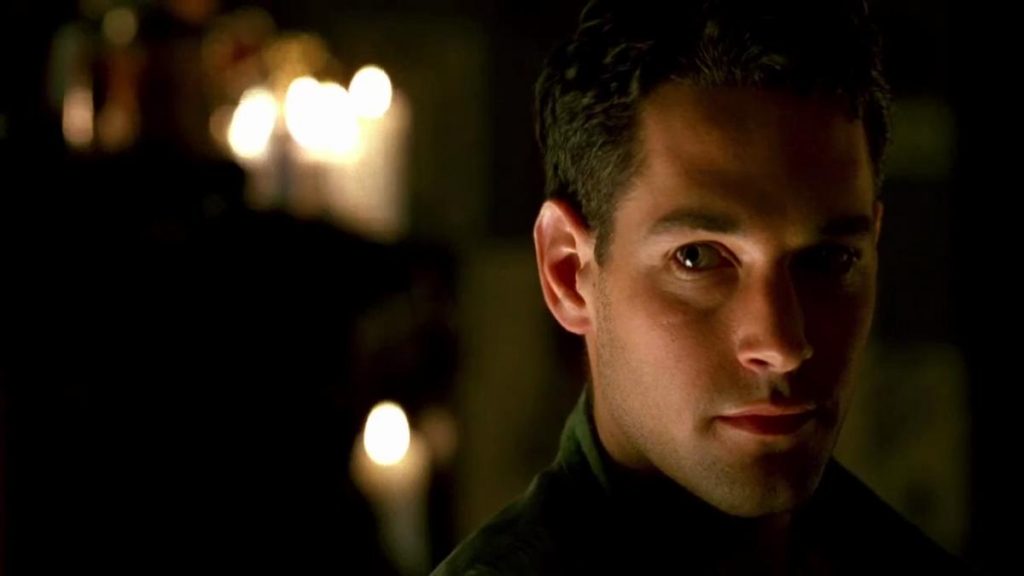
I have met John and Jamie subsequently. Jamie was guest starring on “The New Girl” which coincidentally my brother worked on behind-the-scenes. It was actually the week before Halloween when they shot her episode and my brother kind of quietly approached Jamie to let her know that I was the writer of one of the sequels. The next thing I knew, my phone rang and it was Jamie Lee Curtis. “Well this is a coincidence!” she said. We had a short but lovely conversation. I told her my biggest regret was getting Paul Rudd in the movie but not her.
In so many ways, being part of the “Halloween” family, with the reunions and conventions and getting the chance to meet so many of the talented people behind all of the films and especially the fans, has been one of the great blessings of my life.
RRH: Tell us about the director and the cast of “Halloween 6.” Did you meet them during the filming or not until later?
When I was hired to write the movie, I was told that Fred Walton (of “When a Stranger Calls” and “April Fools Day” fame) was attached to direct. This was really exciting to me, because I am a huge fan of both of those movies – “Stranger” especially. I even wrote a scene in the script as a homage to Fred when Kara looks out the window and sees Michael Myers approaching her friend in the house across the street and screams into the phone, “There’s someone in the room! He’s right behind you!” That scene made it into the final film, but I still wonder how different it might been like had Fred directed the movie.
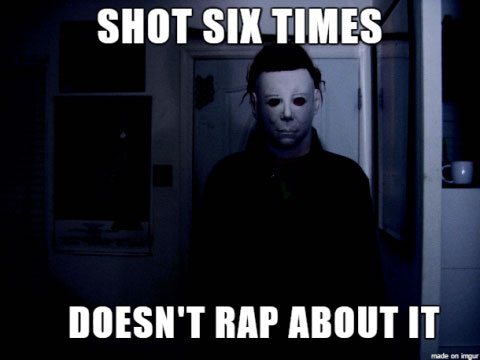
For whatever reason, they couldn’t close a deal with Fred Walton and I was introduced to Joe Chappelle, a young director from Chicago who had gotten some attention in the film festival circuit for his first feature. I think it was called “Thieves Quartet.” The Miramax/Dimension team had just “discovered” Quentin Tarantino and Robert Rodriguez and were looking for hot young directors to fill their growing creative stable. Joe had impressed them and was hired for the job to direct “Halloween 6.” We had a solid relationship from the beginning, but I was a little concerned that he wasn’t as keen on making a “Halloween” sequel as he was making a film that would stand on its own. I respect any director wanting to make his or her own imprint on a franchise film, but it’s important not to forget that it is a franchise – and the audience for that franchise expects a certain style and quality of film. Joe and the DP Billy Dickson did a terrific job of visually capturing the feeling of autumn and the mood of the Halloween season. They were helped by the fact that we started shooting on October 30th in Salt Lake City! All of those colorful leaves falling from the trees were real! No CGI required!
I mentioned Paul Rudd already, who shot “Halloween 6” before he went back to LA to make another movie called “Clueless.” I’m so proud of his success … and often joke when I see his name on a marquee that he owes it all to me!
The rest of our cast was just wonderful and we remain friends to this day. Again, we were all so young and so happy to have this opportunity. While there were things going on behind-the-scenes that weren’t so wonderful, the cast and I really bonded and had a lot of fun together.
RRH: It’s cool that the film introduces Paul Rudd as Tommy Doyle all grown up, but was there any attempt to get Brian Andrews back?
DF: I actually did try to locate Brian Andrews, the original Tommy Doyle, when the film was casting. Since it was still very much a pre-Internet world, I couldn’t go on social media and find him so I called SAG and asked if he had an agent. He did not and they didn’t have any contact information for him. I was really disappointed. Even if we hadn’t cast him as Tommy, it would have been so much fun to have him in a small cameo – maybe even as the bus station attendant that Paul Rudd approaches near the beginning of the film. Or as a member of the Thorn Cult! The possibilities were endless!
I understand that “Halloween Kills” is going to be chock-full of cameos from legacy cast members. That’s really cool and all, but I was asking for the same thing in 1994 – and no one seemed to take me seriously. So much for the writer having any influence!
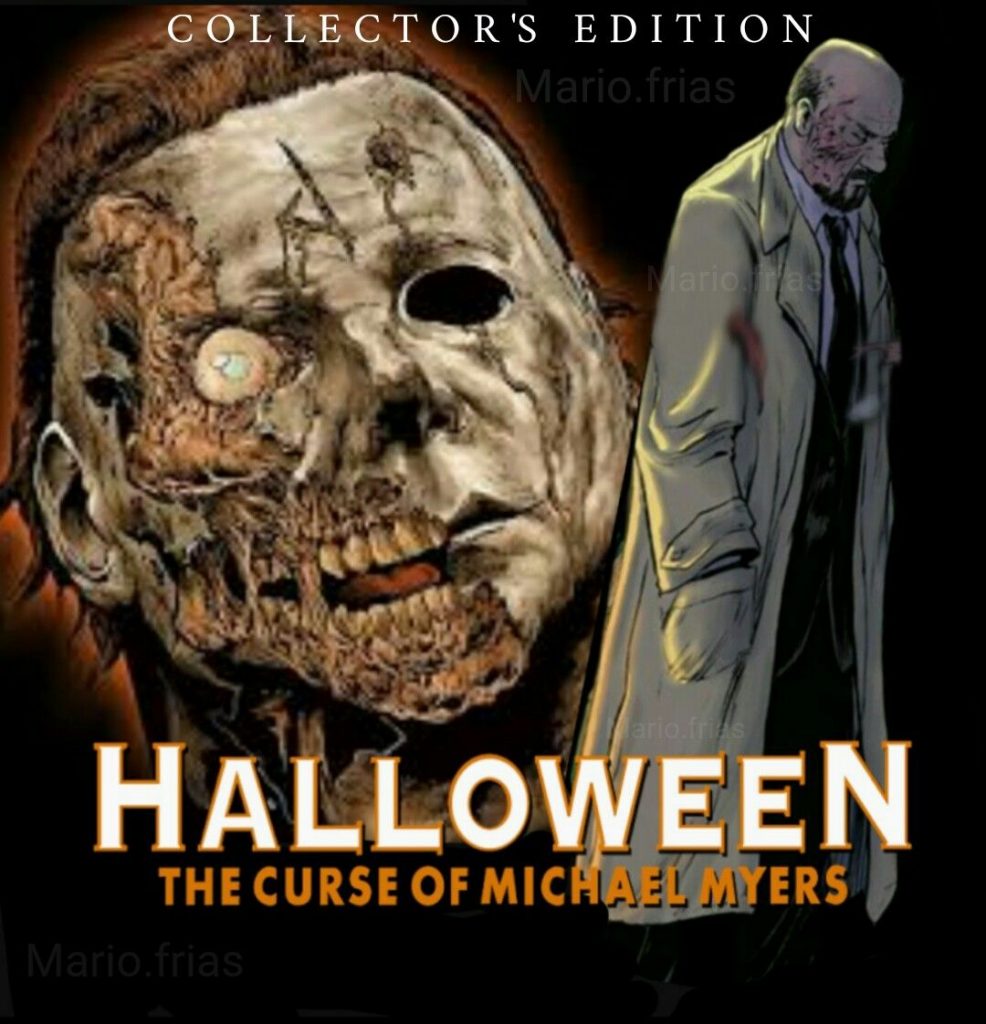
RRH: What was your favorite scene to write, and how did that scene come across onscreen?
DF: It would have to be the “Rear Window” / “When a Stranger Calls” homage I mentioned earlier. I loved bringing the film back to the concept of the original with the two houses in this quiet neighborhood becoming the focus of Michael’s murderous attention. I wanted to connect those two houses in a more specific and immediate way, and again, I wrote that scene specifically with the directorial style of Fred Walton in mind. Still, I think it’s a very creepy, Hitchcockian moment in the film and I think Marianne Hagan (as “Kara Strode”) played it beautifully.
RRH: It must have been a pretty big deal to have a screenwriting credit for a major movie that went out in theaters – what was the reaction of your family and friends, and how did it change your life?
DF: Not only was it a major credit on a wide-release film, it was “Halloween!” It really was one of those “pinch me, I’m dreaming” moments in life where it doesn’t seem like it’s actually happening. It’s the only experience I have ever had where I can relate to what it must be like to win the lottery. I got sent to press junkets and did a Comic-Con panel. I got to ride in a limo with my brother (who they hired to play Michael at a promotional event). I got to sit in the “roped off” section of the theater as it filled with hundreds of fans. It was certainly a monumental experience for me, and it was amazing when a few years later I attended my ten-year high school reunion and everyone was talking about my “big Hollywood break.” After all my years of making horror films in my school, none of my classmates were all that surprised that I wrote a “Halloween.”
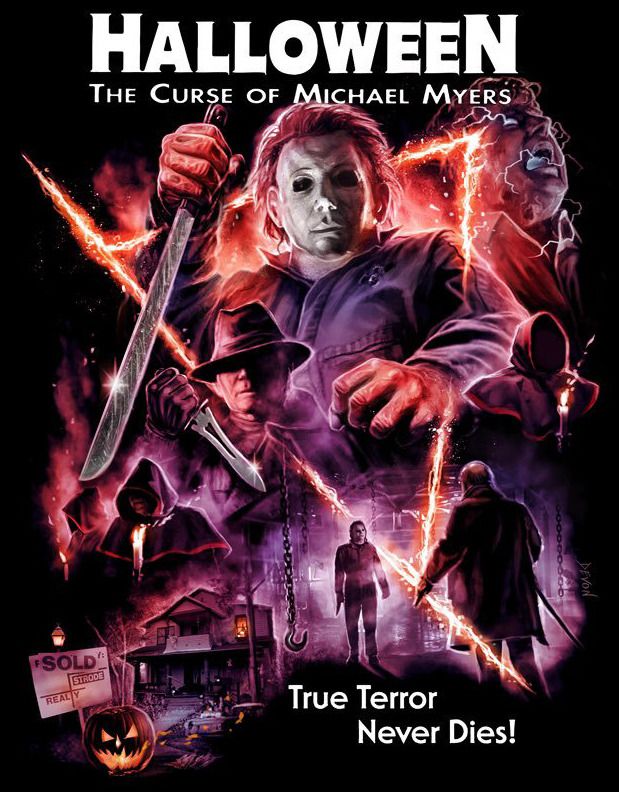
RRH: Your resume reflects a strong interest in true crime and weird history – from History’s Mysteries to The Girl Next Door to The Murder of Nicole Brown Simpson. What is it about that genre that keeps your interest piqued? What’s your true crime dream project?
DF: I don’t know that I ever “planned” to make movies based on true crimes. It started with “Amityville” when I wrote and directed a two-hour History Channel special where I tracked down all of the key players and interviewed them for the first time in 25 years. That began a friendship and close association with the late George Lutz (and now his family) that resulted in me sort of becoming the steward for the rights. I just finished a film about Ted Bundy that I am excited about, especially since we shot it during this horrible pandemic, and managed to come through it unscathed. I think the public will always be fascinated by true crime and ghost stories. And some people will have a hard time with anything that takes a different viewpoint on tragic events. But I think revisionist stories have always been told. It’s sometimes a way of reframing things that were too painful to deal with, and looking at them through a different lens to say, “What if?” I don’t necessarily have a dream project in terms of true crime. I am always attracted to stories that move me emotionally – whether it be through terror, tears or laughter. I have always believed that horror and comedy go hand in hand. It’s just that in horror, the punchline usually involves a lot of blood.
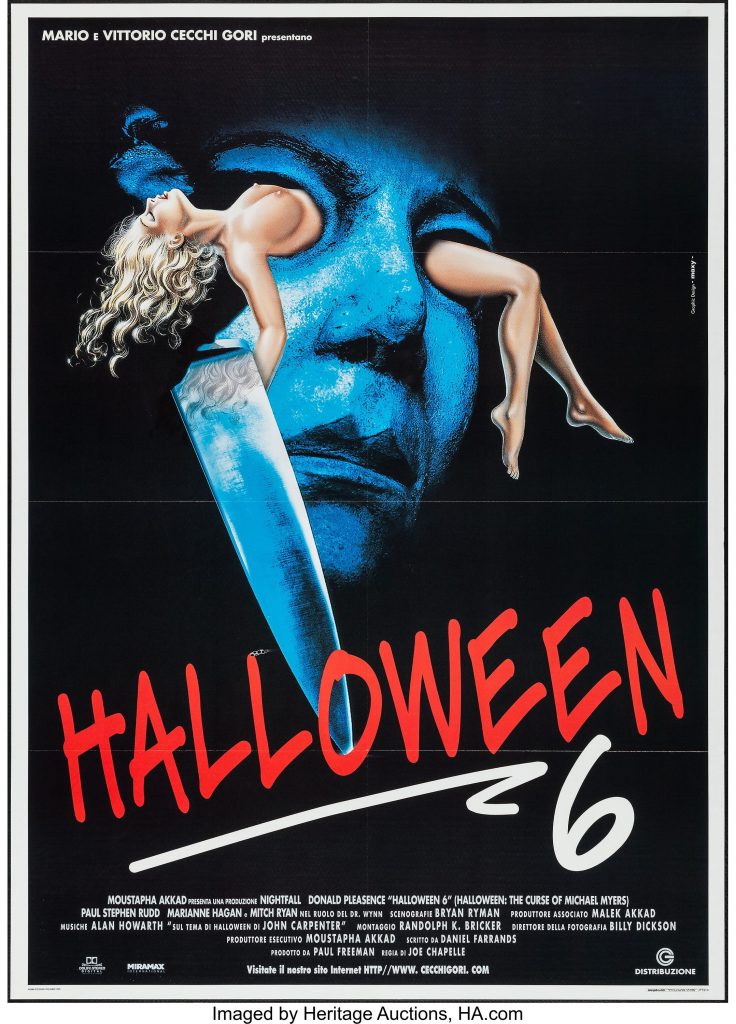
RRH: Lastly–to what do you attribute Michael Myers’ undying appeal throughout the decades?
DF: John Carpenter created that character. I was only his “step-father” for a short period of time. But I think what John has always said is true. Michael isn’t human. He isn’t supernatural. He is something in between. He is like a force of nature. He can’t be explained or reasoned with or stopped. And I think evil is something that we all reckon with at some point in our lives. I think Michael exists to put a face to that unknown, and to give us hope that we too can overcome the monster in the closet.
Halloween: The Curse of Michael Myers is streaming and available on disc.

